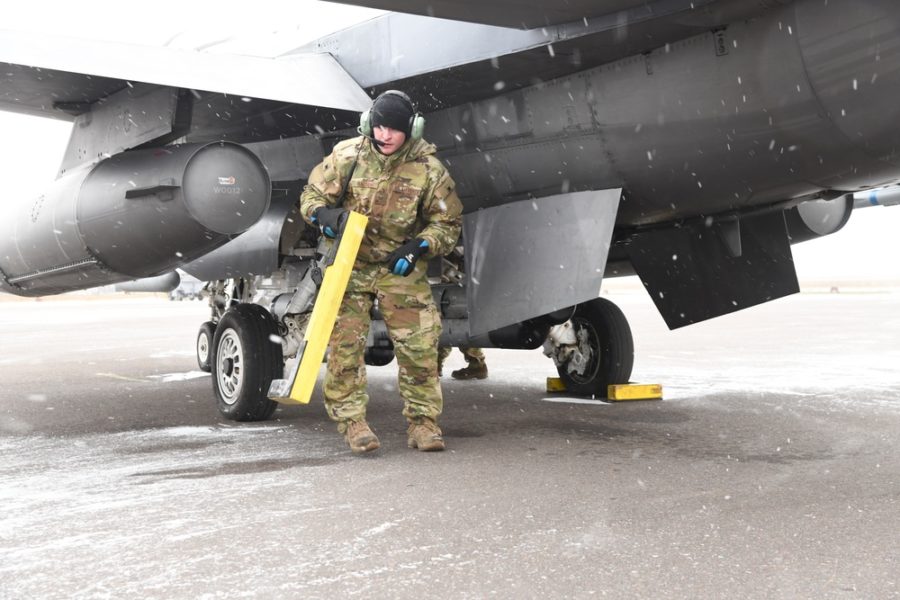The Air Force announced the release of its first doctrine publication on agile combat employment Dec. 14, laying out its core frameworks and concepts as the service looks to codify and develop the new operational approach.
The new doctrine note, signed by Air Force Chief of Staff Gen. Charles Q. Brown Jr., defines ACE as “a proactive and reactive operational scheme of maneuver to increase survivability while generating combat power throughout the integrated deterrence continuum.”
The approach relies heavily on multi-capable Airmen who can operate in austere locations and move quickly, and is defined by five core elements in the doctrine note: posture, command and control, movement and maneuver, protection, and sustainment.
Taken together, these elements “complicate the enemy’s targeting process, create political and operational dilemmas for the enemy, and create flexibility for friendly forces,” the doctrine note reads.
The Curtis E. LeMay Center for Doctrine Development and Education, the Air Force’s principal organization for developing and assessing doctrine, created the doctrine note in consultation with experts across the service.
“Rapid development of guidance is essential to accelerating change for our service and our joint teammates,” Maj. Gen. William G. Holt II, LeMay Center commander, said in a statement. “This doctrine note represents another milestone in our ability to develop and leverage emerging doctrine.”
The hope is that this new doctrine note will serve “as a point of reference to help build new best practices we can then integrate into current doctrine and use to inform future doctrine,” Lt. Col. Richard Major, Air Force doctrine development director, said in a statement.
ACE was developed as a concept by Pacific Air Forces in recent years in response to threats from China, North Korea, and Russia. Fewer main operating bases in the region and growing threats to those bases from new technologies put Air Force assets in danger.
The solution advanced by Brown, then the commander of PACAF, was to be “light, lean, and agile”—distributing forces across a greater range of locations to simultaneously reduce the threat to the USAF and increase unpredictability for adversaries.
Over time, both Pacific Air Forces and U.S. Air Forces in Europe have incorporated ACE exercises into their regular training, though neither major command has declared initial operational capability of the concept.
Air Force Doctrine Note 1-21, “Agile Combat Employment,” lays out the reasons ACE is needed, defines key terms for the concept, and sets out a framework for how it should work.
Informing the whole concept is posture—the placement of forces such that they establish deterrence “by being strategically predictable, but operationally unpredictable.” This increases adversaries’ strategic considerations, but it also requires coordination and interoperability, both across the services and with allies and partners.
With a distributed force, command and control becomes about “centralized command, distributed control, and decentralized execution,” the note states. The development of joint all-domain command and control will increase connectivity and commanders’ ability to coordinate, but “it is highly expected that elements conducting ACE will lose connectivity with operational C2.” As a result, Airmen will have to be trained to understand commanders’ intent and execute based on that.
Movement requires careful posture planning as well as coordination within and across theaters to ensure assets can be maneuvered quickly and at scale when needed.
Protection is necessary to harden the bases and other locations where forces operate, working under the assumption “that air bases are no longer considered a sanctuary from attack” and require both active and passive defenses.
And finally, just as ACE’s posture distributes forces, sustainment is predicated on diversification—using multiple sources to reduce stress on the logistics and infrastructure.
“ACE sustainment plans should focus primarily on aircraft sortie generation but should also include the ability to execute implied tasks such as receiving airlift or sealift for resupply, executing [base operating support] functions, and contracting local services, supplies, and equipment,” the doctrine note states.
All told, ACE “requires a revolutionary change in how the Air Force thinks about and conducts operations within the modern operational environment,” the note concludes, and the concept’s doctrine will continue to be refined over time.
